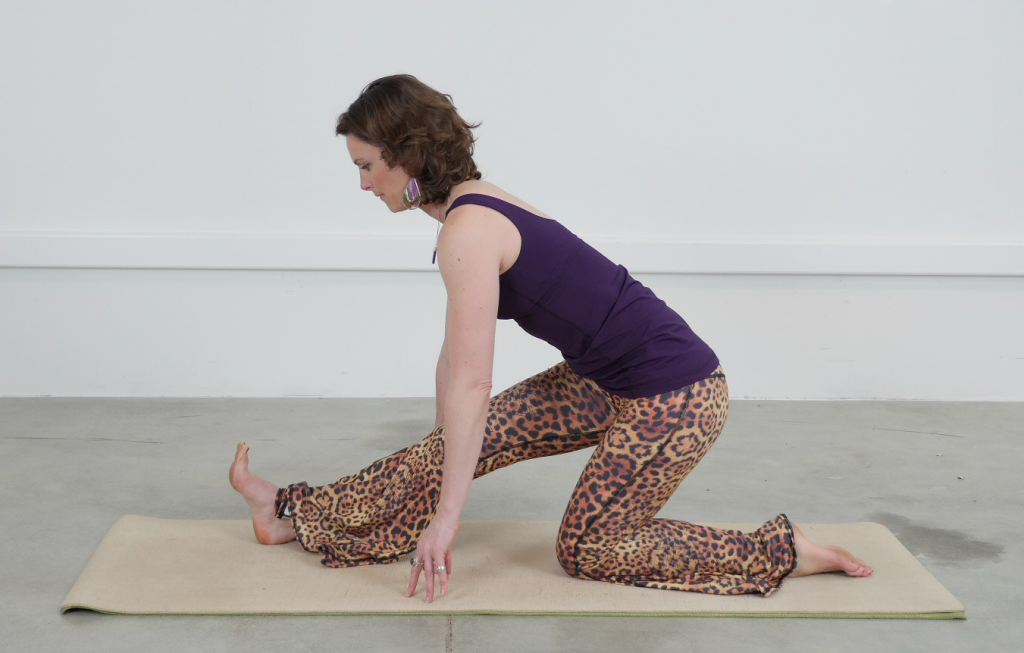
Start simple. Full presence is the key.
by Kara-Leah Grant, author of Forty Days of Yoga
If you’d rather watch a video than read an article, skip to the end of this article and you’ll find a short video of me going over these same five points.
These are simple and effective strategies for creating and maintaining your home yoga practice and it’s the type of thing we explore in more depth in Forty Days of Yoga.
None of these strategies are rocket science – it’s all plain common sense, but these strategies can challenge underlying and unconscious assumptions that are standing between us and our yoga practice. Therein lies their gold.
1. Make it a priority in your day
Simple right? Make yoga matter by shaping your life around it.
Every morning when I wake up, one of the first things to cross my mind is:
When am I going to practice yoga today?
I make a short mental note of the ideal time, and that’s what I work towards. If the only spare time seems to be 10pm, I set a clear intention that at 10pm I will be doing my practice, if that’s what it takes. Otherwise, I see if there’s a way I can re-shape my day to create space for my practice earlier.
2. Give yourself permission to practice for as little as seven minutes
Yes, that’s right – as Mark Whitwell says in The Promise – seven minutes. That’s enough to tune in, connect to your deeper abiding sense of Self, and step off the treadmill of the mind. It’s long enough to open the chest and breath deeply and feel your lungs expand all the way down into your belly. It’s long enough to stretch your hamstrings and your calf muscles, move your spine and loosen your shoulders.
And you know what?
Magic happens when you give yourself the gift of seven minutes on your mat – you won’t want to stop, and often you want. You’ll keep right on practicing. All because you decided to:
Just do seven minutes.
If you’re not convinced, try it and see. After seven minutes of yoga do you:
A) Feel better than when you started?
B) Want to do more?
Case closed.
3. Start where you are with what you know
One of the major reasons yoga students don’t practice yoga at home is because they don’t know what to do. But you do. And if you don’t you are more than capable of finding out.
Your home practice doesn’t have to be a fully sequenced ninety minute practice. You can start with Child’s Pose and Savasana. That’s a home practice. Once or twice a week, add a new posture (try easy pose, simple with big results). Research home practice online. Pay extra attention in yoga class. Buy some excellent yoga books. Be ok with being a beginner and keeping it simple.
So you don’t know much, so what? One thing is enough. (See seven minutes above).
4.Use ritual when you practice
Ritual is something you do every time before you practice. It might be lighting a candle. It might be putting on a yoga playlist. It might be pausing in front of a piece of art to give thanks for the glory of this human life.
It doesn’t matter what it is, what matters it that you do it every time before you practice.
Then, on those days when you don’t want to practice, or can’t be bothered practicing, or don’t feel like practicing, you begin with your ritual.
Don’t even think about practicing, just do that thing you always do before you practice and you’ll find that it magically opens the space where those feelings of not wanting to and can’t be bothered and don’t feel like it drop away and you find yourself practicing.
5. Broaden your definition of yoga
We all know yoga isn’t just asana right? Practicing yoga every day can include other tools in the yogic toolbox like meditation, pranayama, chanting, Yoga Nidra or even Karma Yoga – the act of mindfully being with every day tasks with no thought of reward. Like chopping carrots and making dinner. It’s harder than you might think, but done with mindfulness and full presence, it’s also practicing yoga.
Some days, you might not be able to make it on to your mat for an asana practice. You might be flat out busy, or sick, or travelling. With a broader definition of yoga, you can still make your practice happen.
You could silently chant a mudra during your morning commute, or while you’re doing any kind of travelling. You can meditate while breast-feeding. You can take five minute mini-breaks at your desk to breathe with awareness. You can turn listening to a lecture into yoga by being mindful of your posture, tuned into our breath, and still of mind.
Be creative and be spontaneous.
Those are five small strategies you can use to make yoga a part of your every day life. Where there’s a will, there’s a way. That’s what Forty Days of Yoga – Breaking down the barriers to a home yoga practice is all about. You supply the will, I show you the way.
Leave a Reply